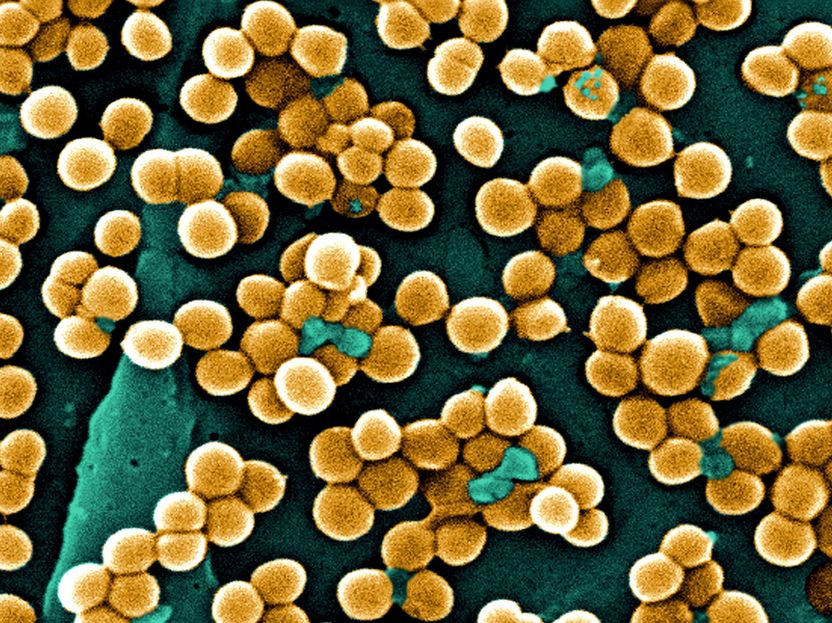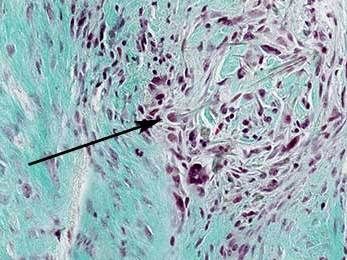Mechanism governing cell division in one of the most lethal superbugs unveiled
A study has unraveled the cell division mechanism of Staphylococcus aureus, one of the most virulent antibiotic-resistant bacteria
CSIC researchers have unveiled the mechanism that governs cell division in one of the most lethal superbugs,Staphylococcus aureus (Staphylococcus aureus). The finding delves into the internal mechanism of bacterial cell division, a key process for the spread of infections, and opens a way to achieve biomedical applications that can curb the proliferation of this antibiotic-resistant bacterium. The study, led by Carlos Fernández Tornero and José Manuel Andreu, from the Margarita Salas Biological Research Center (CIB-CSIC), is published in PLOS Biology.

View of methicillin-resistant Staphylococcus aureus.
USCDCP
The study shows the process by which the FtsZ protein filaments assemble and disassemble to allow cell division in Staphylococcus aureus. This protein may be a target for future antibiotic drugs.
"The activity of FtsZ in the division of most bacteria makes it a target for discovering new antibiotics," says Federico M. Ruiz, CIB-CSIC researcher and lead author of the study. "FtsZ forms filaments that grow and decay simultaneously at opposite ends, causing a movement similar to that of a conveyor belt. Thus, in association with other proteins, FtsZ forms a ring that allows remodeling of the bacterial wall and leads to cell division," explains Ruiz.
The study presents various FtsZ filament structures of Staphylococcus aureus at high resolution. This approach has allowed the researchers to determine the spatial position of each of the atoms of this protein. "This information has been fundamental to understand how the catalytic process of FtsZ is coordinated with certain changes in its conformation, which are essential for the assembly and disassembly of its filaments," said Sonia Huecas, researcher at CIB-CSIC.
Antibiotic resistance causes more than one million deaths per year worldwide and it is estimated that this figure could increase tenfold in the coming decades. About one tenth of current deaths due to antibiotic resistance are due to infections caused by methicillin-resistant Staphylococcus aureus. The FtsZ protein of this pathogen, the subject of the study, plays a central role in cell division, which is necessary for the spread of these infections.
Note: This article has been translated using a computer system without human intervention. LUMITOS offers these automatic translations to present a wider range of current news. Since this article has been translated with automatic translation, it is possible that it contains errors in vocabulary, syntax or grammar. The original article in Spanish can be found here.
Original publication
Other news from the department science

Get the life science industry in your inbox
By submitting this form you agree that LUMITOS AG will send you the newsletter(s) selected above by email. Your data will not be passed on to third parties. Your data will be stored and processed in accordance with our data protection regulations. LUMITOS may contact you by email for the purpose of advertising or market and opinion surveys. You can revoke your consent at any time without giving reasons to LUMITOS AG, Ernst-Augustin-Str. 2, 12489 Berlin, Germany or by e-mail at revoke@lumitos.com with effect for the future. In addition, each email contains a link to unsubscribe from the corresponding newsletter.






















































